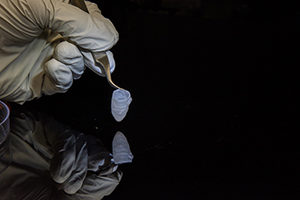
Building a 3D engineered heart ventricle
Collaborators from the Harvard School of Engineering and Applied Sciences (SEAS), the Wyss Institute for Biologically Inspired Engineering, the Harvard Stem Cell Institute and Boston Children’s engineered the ventricles by seeding rat or human heart cells onto 3D nanofiber scaffolds made of biodegradable polyester and gelatin fibers.
Guided by the scaffold, the cells aligned and assembled into beating ventricle chambers. The ventricles’ pressure, volume and contraction rate could be measured as they are in patients. In one test, for example, their beat rate increased when exposed to an adrenaline-like drug.
“The applications, from regenerative cardiovascular medicine to its use as an in vitromodel for drug discovery, are wide and varied,” said Kit Parker, PhD, of SEAS, senior author of the study, in a press release.
Studying cardiomyopathies and arrhythmias
Coauthor William Pu, MD, director of Basic and Translational Cardiovascular Research at Boston Children’s, provided the human cells used for the study. He wants to use the engineered ventricles to better understand genetic forms of heart failure and rhythm disturbances that he sees in children with congenital heart disease.
“The current step was just to develop the technology,” says Pu, who is collaborating with Parker under an NIH “Tissue Chips 2.0” grant. “The next step would be to use these ventricles to model disease.”
The final goal, of course, is to test treatments.
Read the full blog post: “A tissue engineered heart ventricle for studying rhythm disorders, cardiomyopathy” on Vector Blog.
 The opinions expressed in this blog post are the author’s only and do not necessarily reflect those of DrugDeliveryBusiness.com or its employees.
The opinions expressed in this blog post are the author’s only and do not necessarily reflect those of DrugDeliveryBusiness.com or its employees.

